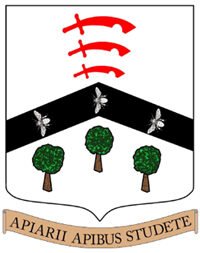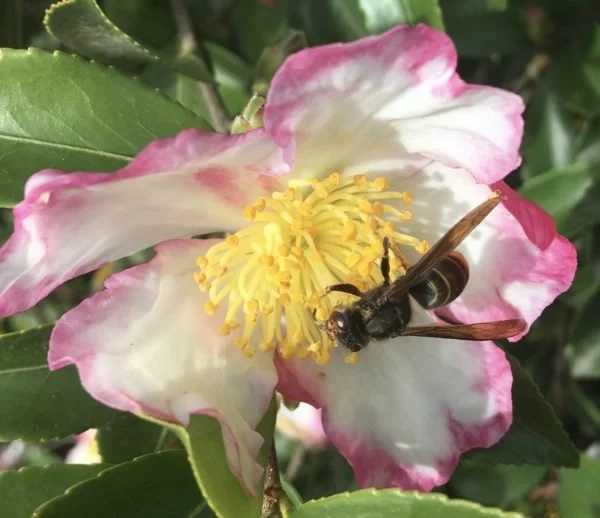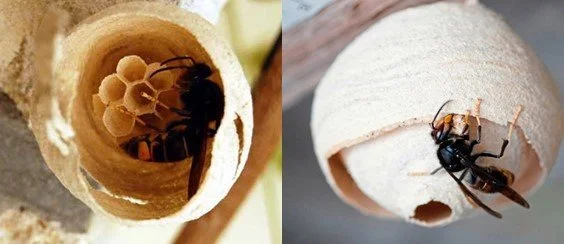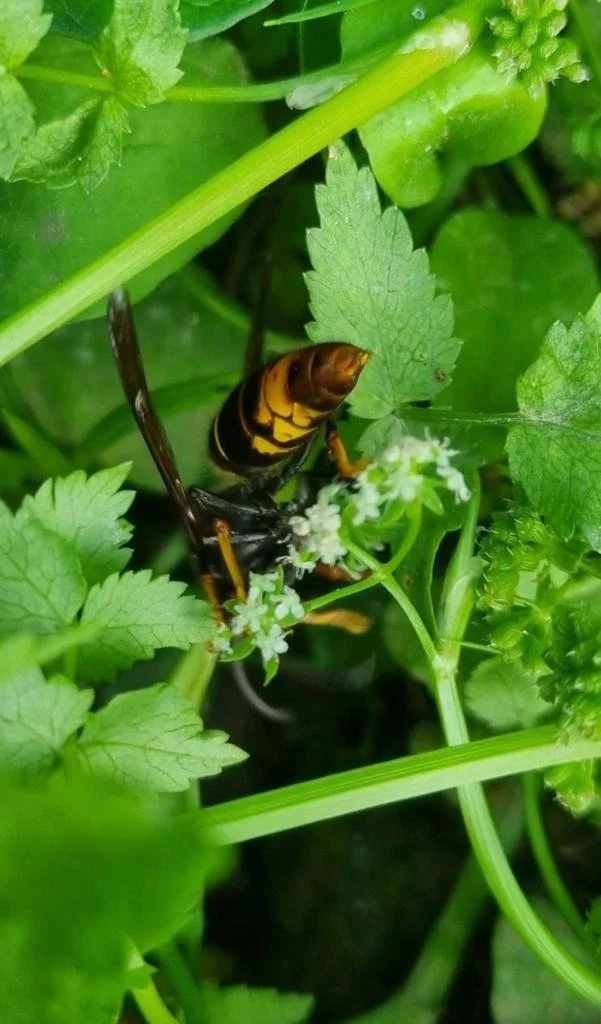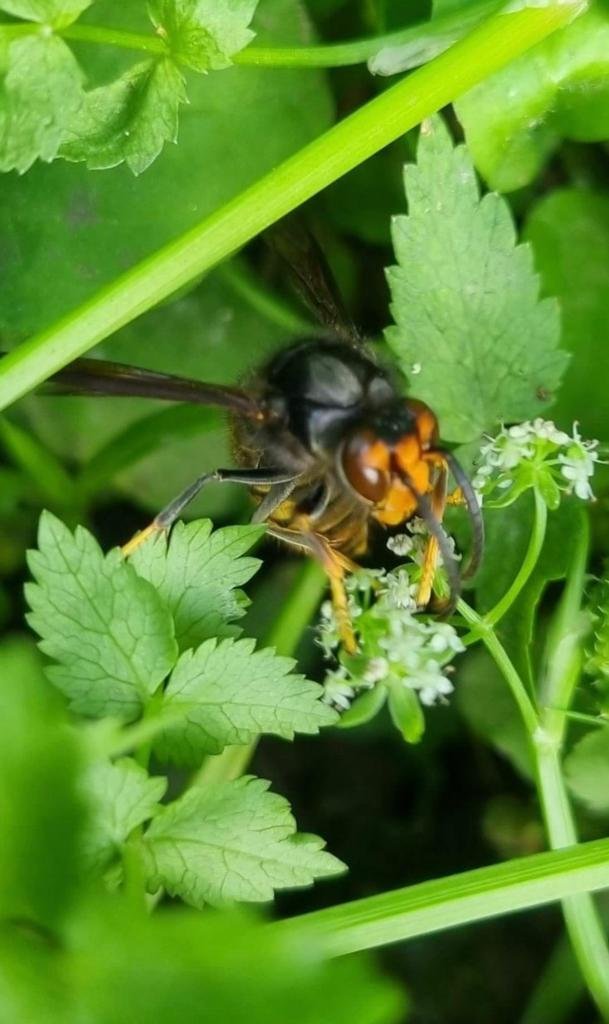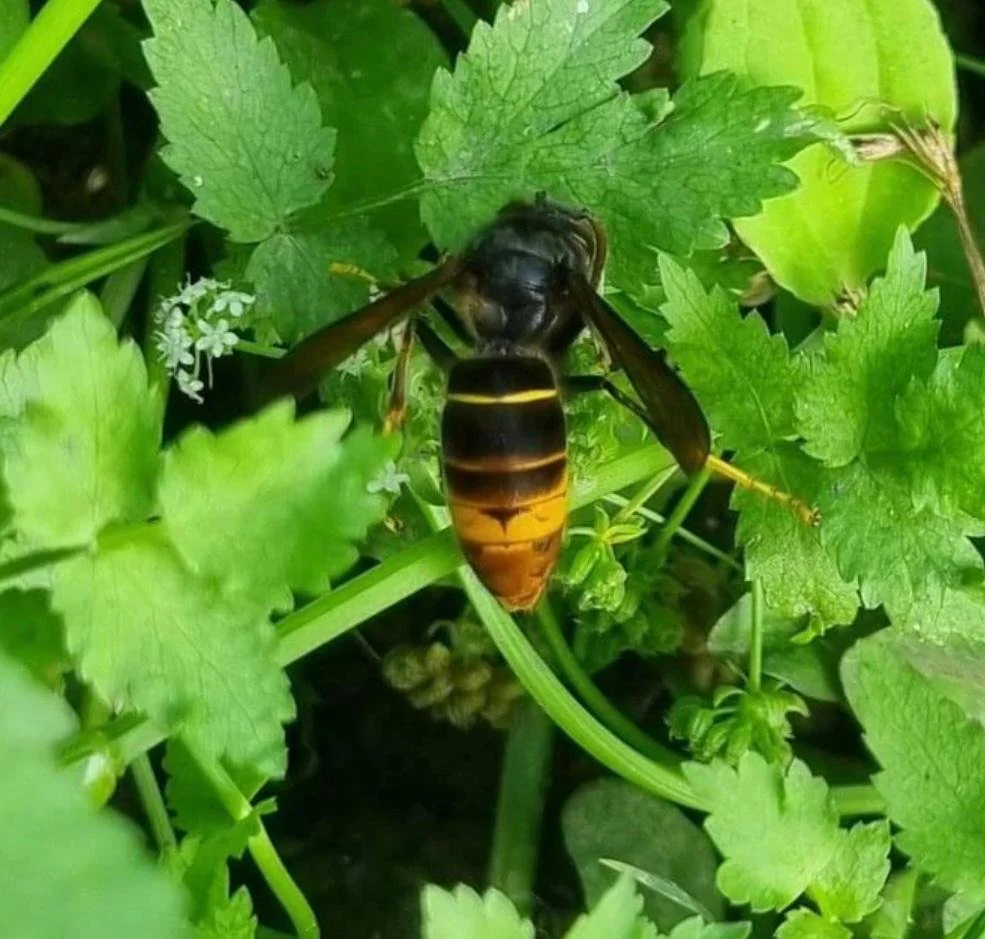Asian Hornet
So far in 2023, 71 Asian Hornets nests have been found in 55 locations in the UK.
So keep a look out for the Asian Hornet, Vespa velutina nigrithorax. This insect could decimate all our pollinators particularly honey bees, it is important to have everyone actively looking for it. Print out this poster and display it where the public can see it. Asian hornet is attracted to ivy in the Autumn and flowering single camellias in Spring. Put an hour aside every day to watch for hornets hawking your hives. Use monitoring traps where you will see them regularly eg kitchen window sill.
Once the daytime temperature reaches around 12ºC Asian Hornet Queens will emerge from hibernation and start to build a primary nest in a sheltered spot, often in a shed, garage or outbuilding. Keep an eye out for these. They start off the size of a golfball and enlarge as the Queen, and then workers, add chewed wood pulp to the structure. (photographs courtesy of BBKA)
To report a sighting download the AH watch App for Android or iPhone now!
These videos from FERA are extremely interesting: Asian Hornet Biology and Asian Hornet Genetics.
Please familiarise yourself with what the Asian Hornet looks like. Try our Insect Identification Competition
If you enjoyed Professor Xesus Feas’ online seminar discussing the impact of Asian Hornet on society at large, not just beekeepers, then visit his website which is packed full of information: vespavelutina.co.uk
Print out this ID poster to display in your workplace, school, community centre, allotment or local shops.
This is a rolling news update with the latest on AH credible sightings, confirmed sightings, and nest destruction.
Here are Andrew Durham’s presentations on AH: Part 1 and Part 2.
Here is the AH AHAT Assessment Exam: you will learn from doing it!
Information about control of AH in the Apiary and in the area around the Apiary.
This document has links to other useful resources.
